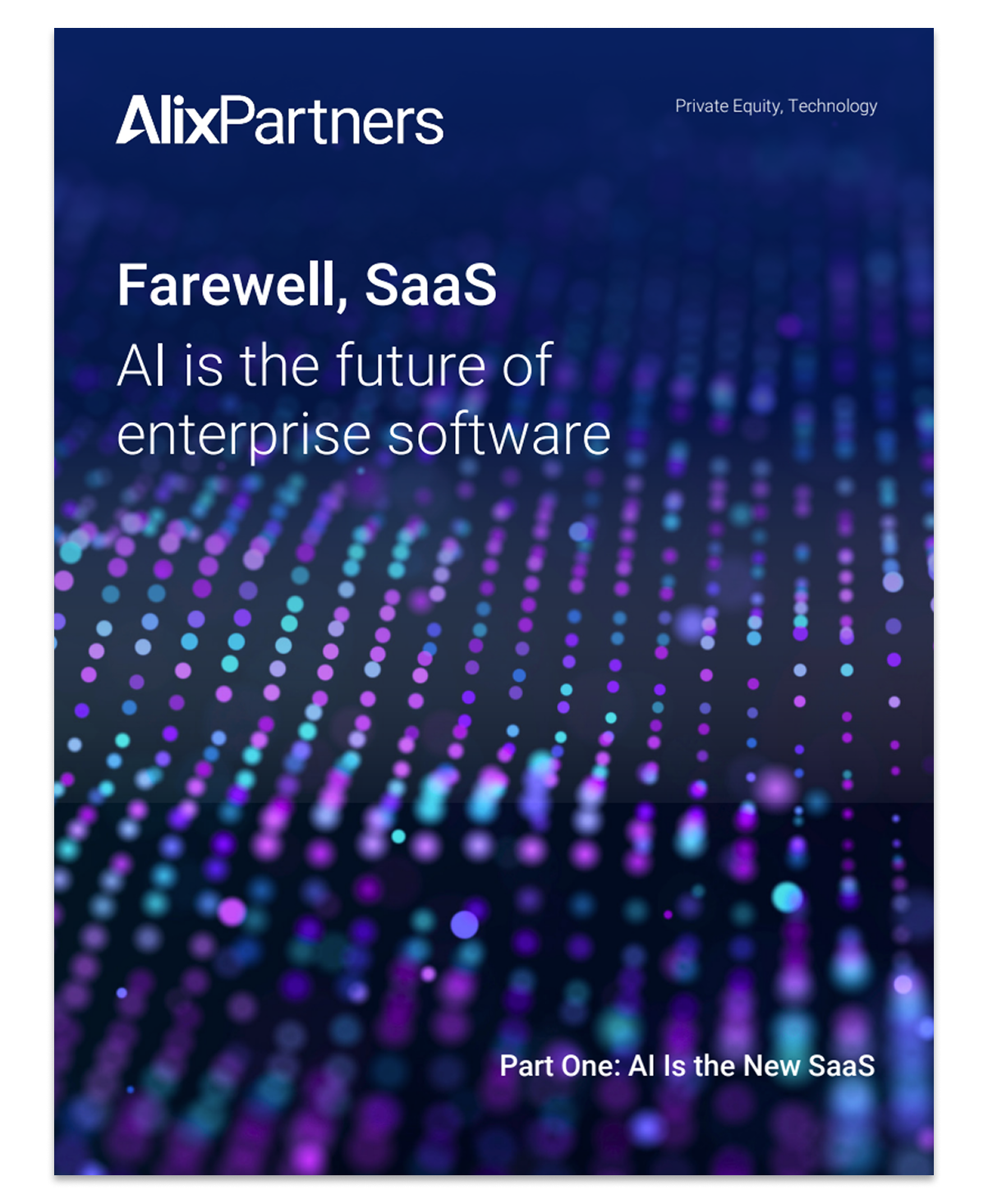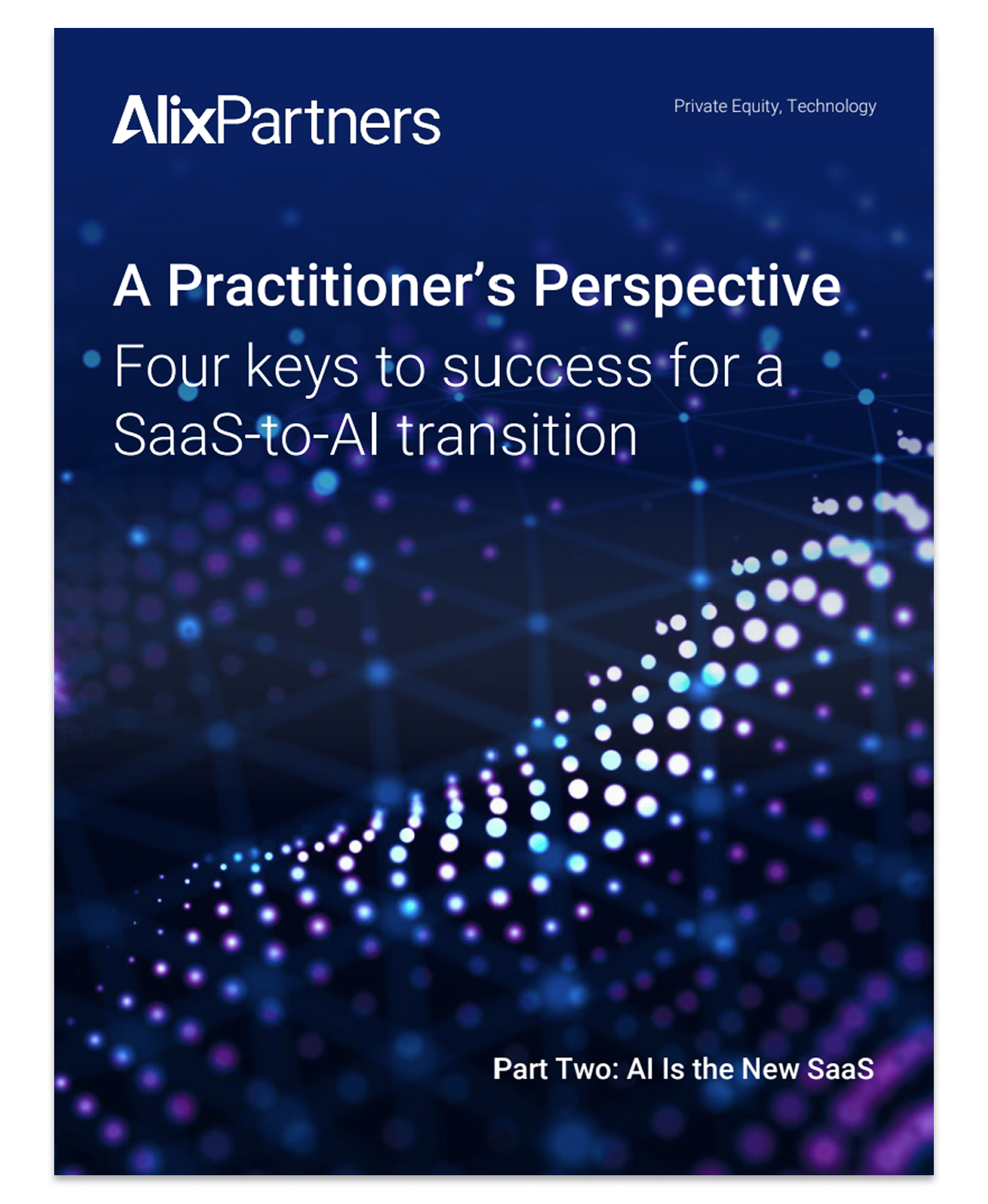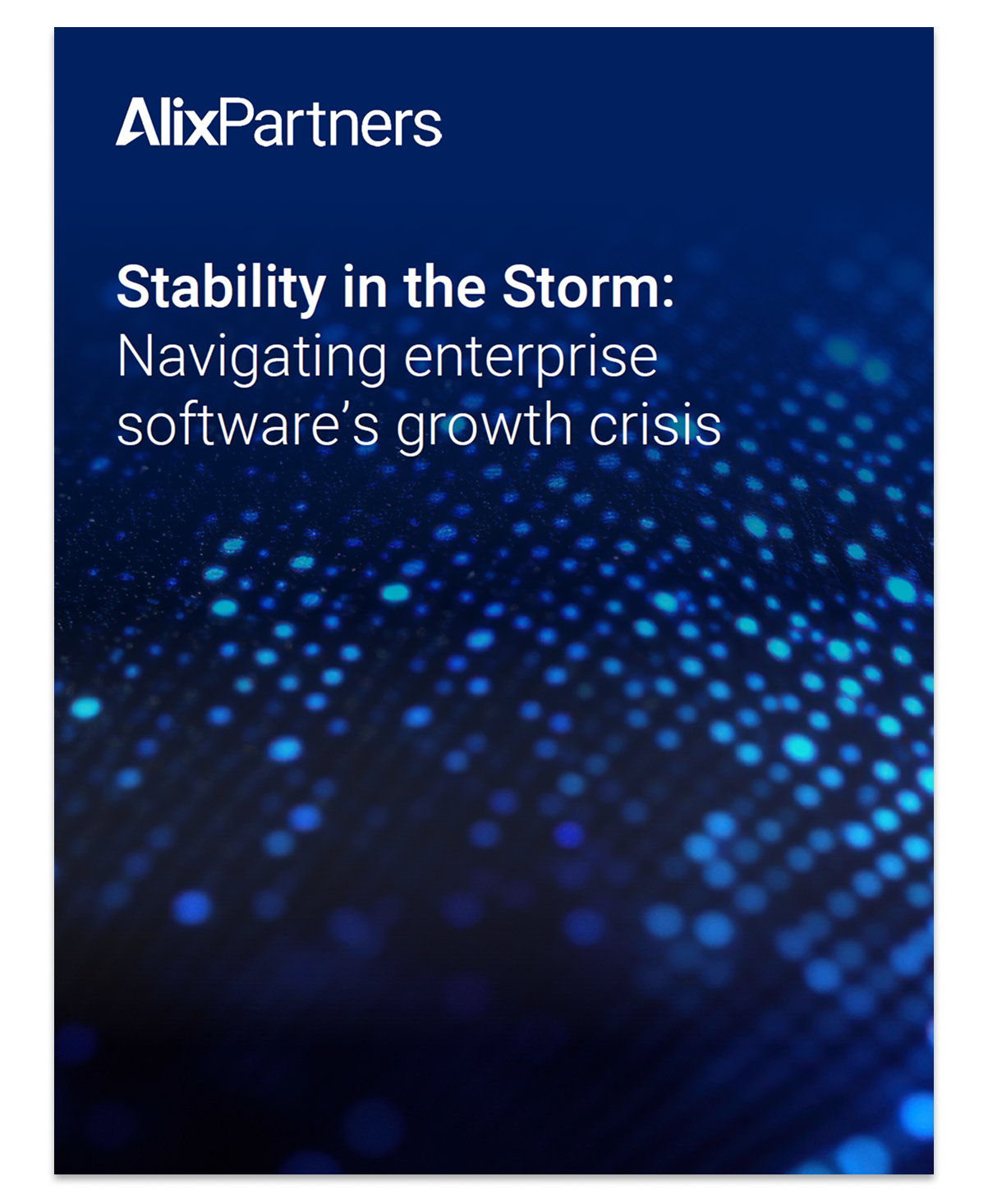
How to redefine enterprise value beyond networking in the age of Artificial Intelligence

In the ever-evolving landscape of enterprise software, mid-market companies are navigating unprecedented challenges and opportunities driven by AI disruption, intensifying competition, declining growth, and shifting investor expectations. These companies are caught in a “big squeeze”—pressed on one side by nimble, AI-native entrants that can replicate applications at a fraction of the cost and on the other side by tech giants that are investing billions in the AI arms race. The challenge facing software companies is compounded for PE investors in the space, with sizable portions of portfolio investments caught in the squeeze.
As a result of this “big squeeze,” we anticipate that many mid-market enterprise software companies will struggle to survive over the next 24 months.

1. Transform SaaS business models to include GenAI and AI agent offerings
Successful transition requires transformation across pricing, sales, marketing, operations, and revenue recognition.

2. Learn from companies that are successfully navigating the SaaS-to-AI journey
As businesses shift to SaaS and AI-driven models, the challenge isn’t just adopting new technologies—it’s ensuring that every function is equipped and ready for the transition.

3. Implement a growth model focused on targeted customer acquisition, retention, and continuous expansion
To maintain predictable growth, companies must implement bold changes to their go-to-market strategies.
4. COMING SOON: Unlock the "fuel for growth" by streamlining your product portfolio and operations
Enterprise software companies can fund investments in high-impact innovations (such as building AI agents) by reducing spend across operations.